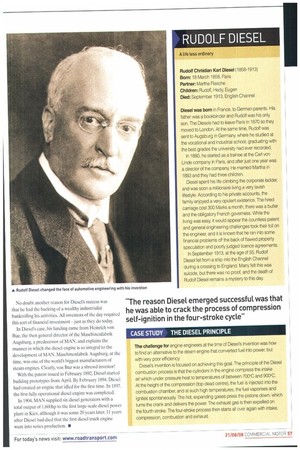CASE STUDY THE DIESEL PRINCIPLE
Page 57

If you've noticed an error in this article please click here to report it so we can fix it.
The challenge for engine engineers at the time of Diesel's invention was how to f;nd an alternative to the steam engine that converted fuel into power, but with very poor efficiency.
Diesel's invention is focused on achieving this goal. The principle of the Diesel combustion process is that the cylinders in the engine compress the intake air which under pressure heat to temperatures of between 700°C and 900°C. At the height of the compression (top dead centre). the fuel is injected into the combustion chamber, and at such high temperatures, the fuel vaporises and ignites spontaneously. The hot, expanding gases press the pistons down, which turns the crank and delivers the power. The exhaust gas is then expelled on the fourth stroke. The four-stroke process then starts all over again with intake, compression, combustion and exhaust.












































































































































































